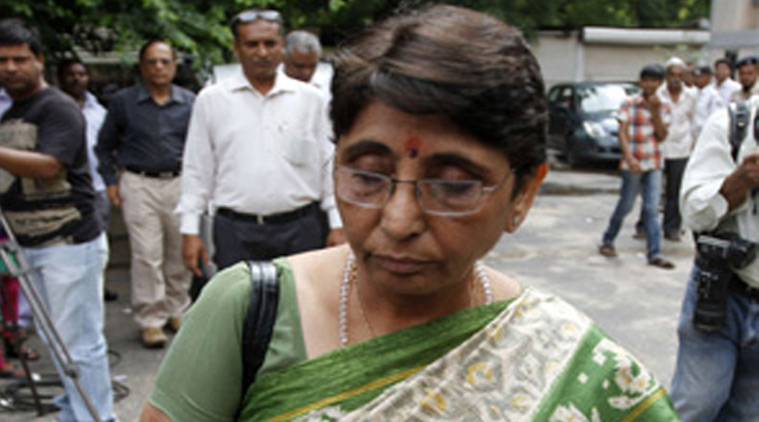 Former Gujarat minister Maya Kodnani (File Photo)
Former Gujarat minister Maya Kodnani (File Photo)
A division bench of the Gujarat High Court on Friday will pronounce the judgment on a batch of appeal petitions moved by 32 convicts, including former Gujarat minister Maya Kodnani, sentenced to life imprisonment for their roles in the Naroda Patiya case in which 97 Muslims were massacred on February 28, 2002 in the post-Godhra riots.
The division bench of justices Harsha Devani and A S Supehia had concluded the hearing and reserved the order in August last year. There are a total of 11 appeal petitions that include four by Supreme Court appointed-Special Investigation Team (SIT).
All the convicts have appealed against their convictions, the SIT filed petitions for enhancing sentences of three convicts, including former Bajrang Dal leader Babubhai Patel alias Babu Bajrangi. Bajrangi was sentenced to life imprisonment with a condition of remission but the SIT has challenged that there should not be remission for Bajrangi.
The SIT has also appealed against seven accused, who were acquitted by the special court that includes two sisters – Ramila Rathod and her younger sister Gita. Their brother Mukesh Rathod, who was sentenced to life imprisonment by a special trial court back in 2012, has filed an appeal petition. Their father Ratilal Rathod alias Bhavani, who died during the trial, was also an accused in this case. Besides, the victims of riots have also filed petitions against the acquittal of the 29 accused.
On February 27, 2002, S-6 of Sabarmati Express train, carrying Kar Sevaks from Ayodhya, was set on fire in which 57 of them were burnt to death. The Vishwa Hindu Parishad and Bajrang Dal declared Gujarat Bandh the next day. On February 28, a mob came out on the road in Naroda-Narol Highway and gathered at Naroda Patiya.
The written submission by the SIT stated that at around 9:30 AM “Dr Maya Kodnani, the MLA of the said area, after completing the mourn meeting in the Vidhan Sabha came near Noorani Masjid and as per the evidence on record she made some speech and said “Kill Muslims, destroy the property of Muslims.” It says that after some time Maya Kodnani left the place and the mob went on rampage. She was spotted at the scene of offence by ten witnesses.
Kodnani was found guilty by the special court in August 2012 and was held as a “kingpin” of the riots. SIT has said that the incident was a “preplanned conspiracy in view of the Godhra train carnage case.”
The defence lawyers have argued that there are several contradictions and omissions in the statement of these witnesses and based on which she couldn’t have been held guilty. The SIT responded that “All the witnesses, except police witnesses, are rustic witnesses coming from a lower strata of the society, not educated and poor people and they are below the poverty line. All the witnesses have either lost their family members, friends or their belongings, their houses were burnt.” It says that they may have been under fear when they recorded their statements before the police for the first time. It adds that these witnesses have also said that the police were not investigating the case in a proper manner and didn’t record their statement properly.
The appeal petitions in this case were marred with several controversies with different judges recusing themselves from hearing it. In April 2015, the Supreme Court had stayed the proceedings after the SIT complained that high court judge Ravi R Tripathi (retired) was expeditiously hearing only the appeal of Kodnani.
In November 2016, justice Akil Kureshi had recused himself after senior lawyer B B Naik joined the case despite knowing that this would amount to “conflict of interest.” Justice Kureshi said in the open court that “It is very painful. We will not say anything but it tarnishes the image of the institution and confidence of people… this should not have happened. I am bound by the court… I have no interest in this case.”